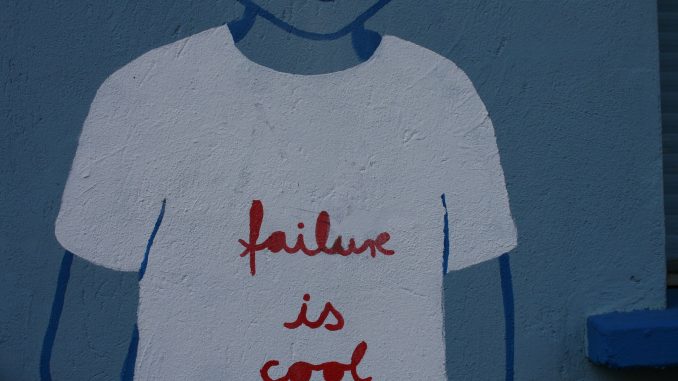
This article is part of a series I wrote some time ago when I was in the process of designing a business sustainability boardgame and was documenting the design process.
A couple of days ago I said that Castle Dice was my absolute favourite game in the whole world. When I said this I may have been overlooking another game slightly. The other game is 2048. For those of you who don’t know 2048 – it’s a simple puzzle game in which the player slides numbered blocks around a 4×4 grid. When two blocks containing the same number collide they merge to form a block containing twice that number. The object of the game is to create a block containing the number 2048. Just search in Google for 2048, but please don’t blame me if you fall into a timesink.
Last night I cracked it. I made 2048, and this morning I feel free. This may go some way to explaining why I cited Castle Dice and not 2048 as my favourite game. Castle Dice feels like a ‘proper’ game, whereas 2048 feels like a bit of a guilty pleasure – an itch that needs scratching. When I’ve finished playing Castle Dice, I feel happy about time well spent with friends and family. After a long session of 2048, I often feel disappointed that I have not yet reached the goal. Often this feeling is also tinged with the tiniest bit of self-loathing that I have yet again spent x amount of time playing 2048 instead of ironing / working on my own game / cleaning up the mess in the house / filing tax return (delete as applicable). I feel a little like a reformed smoker who has suddenly found herself begging a cig and lighting up at a party.

With respect to the business learning game I am creating, I definitely don’t want the participants finishing with the feeling that they could have been doing something better with their time, but I do want to capture some of the compulsion to continue which I feel when playing 2048. One of the things I find particularly interesting is how my intention to play for ‘just 5 minutes’ is swept aside. Failure to achieve the goal, instead of prompting me to give up, merely drives me to have ‘just one more go’, until I realise that it’s stupid o’clock and I really need to go to bed.
I have witnessed the powerful demotivational effect of failure in some games designed for learning – in particular in a competitive team situation, and I have also personally experienced how I have been demotivated in both game and real-life situations by my own failures. So what is it about the way failure is dealt with in this game that makes it such a spur to continue, and how can I adapt and apply that to my game setting?
I have spent a little time trawling around the available literature on failure in games and motivation. I can recommend this. It’s fascinating, and there are some very well written Psychology, Education and Serious Games papers out there, but I will try to distil from them the parts which I find most relevant to my job in hand.
Experimentation and perseverance – games allow for repeated experimentation and perseverance in the face of failure. Perseverance is a form of achievement which allows the player to feel rewarded by failure – the ‘I’m not going to let this beat me’ feeling
Problem- solving strategies – on its own perseverance might fail to motivate for a long period in the face of continued failure, but failure also allows an opportunity to try again in a different way – to experiment with different strategies. And before you ask, yes, you can come up with a winning strategy for a puzzle with the simple rule set like 2048 – I came up with it two nights ago and it was only a matter of time then before I managed to successfully apply it. I won’t publish a spoiler here, but you can email me if you like sarah@ludogogy.co.uk. I’ll also give you my system for halving Sudoku solving time if you want. Problem-solving and coming up with strategies reward because they engender feeling of competence, creativity and choice – all of which are components of meaningful play.
Rapid feedback – 2048 gives constant and rapid feedback. The two ‘formal ‘measures of your success or failure are the magnitude of the highest number block you have managed to create and your ‘high score’ – a points based score which relates to the number of tiles you have managed to merge. There are other less formalised measures of your progress or lack that can be perceived as you play. Most notably, your current game finishes and you fail if:
- You have failed to create the 2048 block AND
- There are no blocks with the same numbers adjacent to each other which can be merged AND
- There are no gaps not filled by numbered blocks in your grid.
So, the gradual filling of the grid by blocks indicates you are close to failure. The distance between blocks of the same number indicate the degree of difficulty you are in. Taken together, these pieces of feedback build a picture of how well you are playing, regardless of your current score or the highest tile. All of these feedback mechanisms will help to feed to desire to persevere in the following ways:
- To achieve the next highest numbered block for the first time
- To achieve a higher numbered block next go
- To improve upon one’s high score
- To play better next time
Rewarding effort not mastery – Mastery of this game is by achievement of the ultimate goal – the 2048 block. However, the high-score mechanism allows a feeling of progress towards this as does the act of achieving a higher numbered block for the first time.
In theory – I mastered the game yesterday and that being the case, I now feel I don’t need to play again – errrr…. except for one thing. Very stupidly, in hindsight, I downloaded a version of the game which allows me to play in ‘infinite’ mode. This means I could theoretically play the game without an ultimate end goal (see Tetris) with no possibility of mastery – just the reward of bettering my own performance. I fear I may return after the current hiatus.
Stakes – the penalties of failure are low. Nothing horrible is going to happen to me because I haven’t made the 2048 block. This makes many games unlike real life, where the consequences of failure at, say, rock climbing, are potentially disastrous. This makes games a safe place to experiment and allows resilience and perseverance in the face of failure.
Simplicity of trying again – When I fail in 2048, it is very easy to try again. The actual actions I need to carry out to play could not be simpler to do. I slide my finger across a screen. Also the first thing that pops up when I do fail is a button which I can click ‘Try Again’ which clears the screen and starts me off, which is actually easier than putting the thing down!
Contrast this with failure in some real life situations and in some games where a large amount of preparation or re-doing is required to make another attempt. Discovering you do not have enough oxygen when halfway up Everest (in real life or in an realistic Everest climbing sim game) will require you to climb back down, reorganise (and refinance) another expedition and climb halfway back up again before you are even back in the same position – this is part of the ‘low stakes’ element.

All well and good – but what about the self-loathing thing? Where does that come from and how can I avoid it in the game I am creating. Without getting too involved or pretending to have in-depth knowledge of Psychology (and Sociology) which I don’t, I think I will look to brain chemistry to explain why I continue to play and Socialisation to explain why I feel bad about it. I have expectations of myself as wage-earner, mother, household member and member of society which I feel I am failing to live up to if I spend time doing something as trivial as playing a game, when I could be doing something ‘useful’. But, my reptile brain doesn’t care about any of that so long as it keeps getting the dopamine shots.
I need to balance the two in my activity. I will, after all, be expecting people to dedicate both money and time to my game. Succeed or fail, my participants must feel their time is well spent as well as compelling and fun. When I am designing for the elements above, I must constantly have in my mind the question ‘But what does that help my players to learn, and how?’
Blimey – who would have thought there was so much in it? For a game based on such a simple premise, there’s a lot of stuff going on. The lessons I am taking forward to my own design are:
- Give the participants scope to try different strategies
- Include lots of opportunities to solve problems
- Give participants autonomy in their choices
- Make it easy to return from a point of failure without too much recapping
- Build in formal and informal progress indicators which will encourage perseverance
- Feedback should be timely and frequent
- Include inter-team competition only if it is relevant to the goal / learning objective
- Ensure that game goals consider participants’ ‘socialised’ view of themselves and their objectives as well as the dopamine shots
- James Bore – The Ransomeware Game - 13th February 2024
- Ipsodeckso – Risky Business - 23rd January 2024
- Review – Luma World Games - 15th December 2023





Be the first to comment